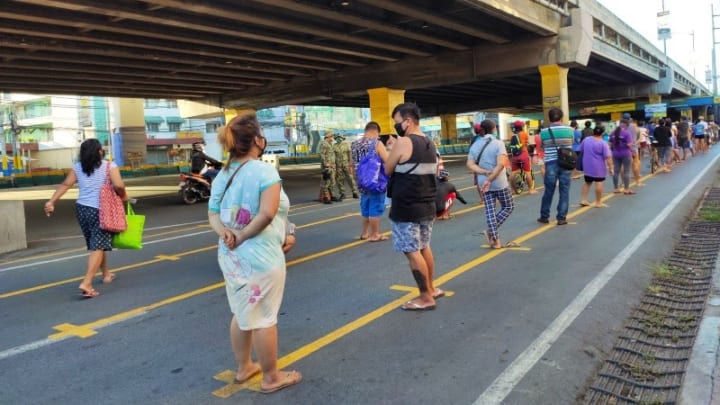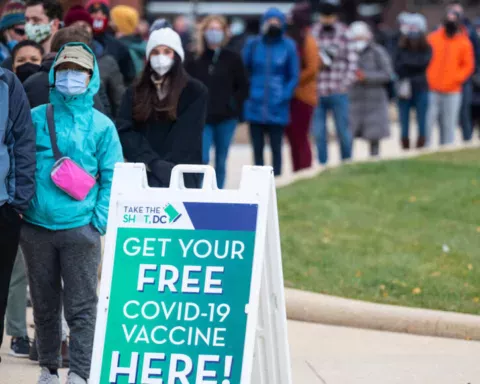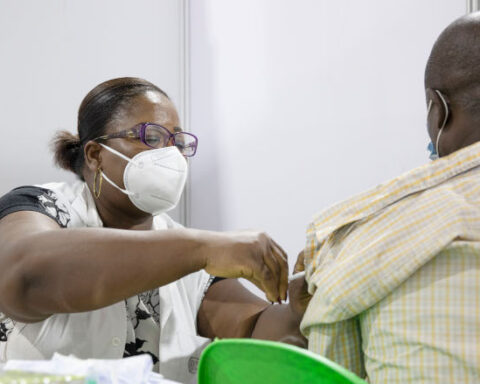Limiting close face-to-face contact with others is the best way to reduce the spread of coronavirus disease 2019 (COVID-19).
What is social distancing?
Social distancing, also called “physical distancing,” means keeping a safe space between yourself and other people who are not from your household.
To practice social or physical distancing, stay at least 6 feet (about 2 arm lengths) from other people who are not from your household in both indoor and outdoor spaces.
Social distancing should be practiced in combination with other everyday preventive actions to reduce the spread of COVID-19, including wearing masks, avoiding touching your face with unwashed hands, and frequently washing your hands with soap and water for at least 20 seconds.
Why practice social distancing?
COVID-19 spreads mainly among people who are in close contact (within about 6 feet) for a prolonged period. Spread happens when an infected person coughs, sneezes, or talks, and droplets from their mouth or nose are launched into the air and land in the mouths or noses of people nearby. The droplets can also be inhaled into the lungs. Recent studies indicate that people who are infected but do not have symptoms likely also play a role in the spread of COVID-19. Since people can spread the virus before they know they are sick, it is important to stay at least 6 feet away from others when possible, even if you—or they—do not have any symptoms. Social distancing is especially important for people who are at higher risk for severe illness from COVID-19.
If you are sick with COVID-19, have symptoms consistent with COVID-19, or have been in close contact with someone who has COVID-19, it is important to stay home and away from other people until it is safe to be around others.
COVID-19 can live for hours or days on a surface, depending on factors such as sunlight, humidity, and the type of surface. It may be possible that a person can get COVID-19 by touching a surface or object that has the virus on it and then touching their own mouth, nose, or eyes. However, this is not thought to be the main way the virus spreads. Social distancing helps limit opportunities to come in contact with contaminated surfaces and infected people outside the home.
Although the risk of severe illness may be different for everyone, anyone can get and spread COVID-19. Everyone has a role to play in slowing the spread and protecting themselves, their family, and their community. In addition to practicing everyday steps to prevent COVID-19, keeping space between you and others is one of the best tools we have to avoid being exposed to this virus and slowing its spread in communities.
Tips for Social Distancing
When going out in public, it is important to stay at least 6 feet away from other people and wear a mask to slow the spread of COVID-19. Consider the following tips for practicing social distancing when you decide to go out.
- Know Before You Go: Before going out, know and follow the guidance from local public health authorities where you live.
- Prepare for Transportation: Consider social distancing options to travel safely when running errands or commuting to and from work, whether walking, bicycling, wheelchair rolling, or using public transit, rideshares, or taxis. When using public transit, try to keep at least 6 feet from other passengers or transit operators – for example, when you are waiting at a bus station or selecting seats on a bus or train. When using rideshares or taxis, avoid pooled rides where multiple passengers are picked up, and sit in the back seat in larger vehicles so you can remain at least 6 feet away from the driver. Follow these additional tips to protect yourself while using transportation.
- Limit Contact When Running Errands: Only visit stores selling household essentials in person when you absolutely need to, and stay at least 6 feet away from others who are not from your household while shopping and in lines. If possible, use drive-thru, curbside pick-up, or delivery services to limit face-to-face contact with others. Maintain physical distance between yourself and delivery service providers during exchanges and wear a mask.
- Choose Safe Social Activities:It is possible to stay socially connected with friends and family who don’t live in your home by calling, using video chat, or staying connected through social media. If meeting others in person (e.g., at small outdoor gatherings, yard or driveway gathering with a small group of friends or family members), stay at least 6 feet from others who are not from your household. Follow these steps to stay safe if you will be participating in personal and social activities outside of your home.
- Keep Distance at Events and Gatherings: It is safest to avoid crowded places and gatherings where it may be difficult to stay at least 6 feet away from others who are not from your household. If you are in a crowded space, try to keep 6 feet of space between yourself and others at all times, and wear a mask. Masks are especially important in times when physical distancing is difficult. Pay attention to any physical guides, such as tape markings on floors or signs on walls, directing attendees to remain at least 6 feet apart from each other in lines or at other times. Allow other people 6 feet of space when you pass by them in both indoor and outdoor settings.
- Stay Distanced While Being Active: Consider going for a walk, bike ride, or wheelchair roll in your neighborhood or in another safe location where you can maintain at least 6 feet of distance between yourself and other pedestrians and cyclists. If you decide to visit a nearby park, trail, or recreational facility, first check for closures or restrictions. If open, consider how many other people might be there and choose a location where it will be possible to keep at least 6 feet of space between yourself and other people who are not from your household.
Many people have personal circumstances or situations that present challenges with practicing social distancing to prevent the spread of COVID-19.






